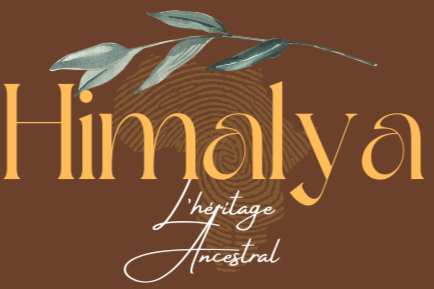From the Greek “Hibiscos” which translates as “marshmallow”, hibiscus is a genus of perennial flowering plant of the large Malvaceae family (Malvaceae)
Very renowned since antiquity for its numerous medicinal and ornamental virtues, the hibiscus was then cultivated in South-East Asia and Egypt before being imported to the West in the 12th century by the Moors of Spain and finally gaining the new continent.
To date, there are more than 30,000 different species of hibiscus, each appreciated for their various properties. The beauty of their brightly colored flowers charm lovers and has also earned certain species the national emblem of South Korea (hibiscus syriacus) and Malaysia (red hibiscus).
Hibiscus sabdariffa is a variety very well known in Egypt and Africa where it was imported in the 19th century from Southeast Asia. In addition to its ornamental qualities, the hibiscus sabdariffa commonly known as Guinea sorrel or Roselle is coveted for its medicinal and cosmetic properties.
The health benefits of hibiscus
Rich in ascorbic acid, which gives it its tangy taste,
Hibiscus has multiple beneficial properties for health, it is both a
• antibacterial
• anti-inflammatory
• antiseptic (natural disinfectant)
• analgesic (acts against pain)
• diuretic • mild laxative
• emmenagogue (promotes the onset of menstruation)
• relaxing uterine muscles
• cholagogue (promotes the evacuation of bile towards the intestine by contraction of the vesicle)
• hypotensive
• hypocholesterolemic (allows the maintenance of good cholesterol levels)
For internal use: Herbal teas, juices, infusions
The history of Hibiscus by Okhamaré Various scientific studies have proven the effectiveness of hibiscus on high blood pressure, high cholesterol, small urinary infections (properties recognized by EFSA, European food safety authority) and in the prevention of kidney stones. The infusion of the calyxes of hibiscus sabdariffa flowers makes it possible to obtain a drink very popular in Africa and now around the world. It has different names depending on the country of production: Bissap in Senegal, Karkadé in Egypt, aqua de jamaica in Mexico, foléré in Cameroon, currant country in the West Indies, karakandji in Central Africa... A scientific study carried out in 2010 at the Boston University (United States) demonstrated that consuming three cups of Bissap per day for three months significantly reduced high blood pressure in moderately affected subjects. This drink is also used for prevention. The infusion of hibiscus roots was also widely used in Egypt to calm inflammation of the upper respiratory tract. Hibiscus also has antiphlogistic properties (fights against infection and promotes its resorption), it promotes the healing of certain eczemas, certain dermatoses or skin allergies. It also has anti-edematous properties. Although its health benefits are widely recognized, hibiscus is not a medicine and consuming too much of it over a long period of time could be harmful to the liver. Furthermore, its consumption is not recommended for young children, pregnant women (for its emmenagogue properties) and breastfeeding women. Hibiscus on our plates... Not all species of hibiscus are edible, only a few of them, such as hibiscus sabdariffa, syriacus, and esculentus for example, are used in cooking. ➢ The leaves and shoots of hibiscus sabdariffa are eaten raw or cooked just like vegetables. ➢ The flowers of the hibiscus syriacus are edible and are often used as an infusion for their emollient power (relaxes, relaxes tense tissues) ➢ The fruits of the hibiscus esculentus called okra are used, like vegetables, in the composition of many African dishes , Asian, Central and South America.
Hibiscus, my beauty ally! The hibiscus flower has proven to be a real beauty asset from Africa, it is used in the composition of many cosmetic products. In the form of cream, oil, hydrosol, soaps, hibiscus contributes to our well-being and takes care of our skin and our hair thanks to its numerous regenerating, hydrating and protective properties. A rejuvenating asset: Hibiscus is rich in anthocyanins, molecules belonging to the class of flavonoids (just like polyphenols), and which prove to be powerful antioxidants which fight against the free radicals responsible for cellular aging.
A hydration asset: Hibiscus also contains many natural active ingredients such as sugars and essential fatty acids with beneficial hydrating power for dry, weakened and devitalized skin. Used in oil, hibiscus flowers provide natural protection to the epidermis while allowing better absorption of water into the cells. Hibiscus flower oil is also used in hair care to prevent the appearance of split ends and promote hair growth. In hydrosol, hibiscus restores strength and shine to hair. An anti-dull complexion asset: Hibiscus is also very rich in vitamin C and polyphenols, applied to the skin, it will promote the elimination of dead skin often responsible for a dull complexion while stimulating the production of collagen, thus promoting a better elasticity of the skin. All of which then provides a radiant complexion. We recommend the use of hibiscus extracts in the composition of the following products: – shampoos for damaged and fragile hair – softening body lotions – hand creams, moisturizing soaps – soothing after-sun gels – peeling masks for skin mature or dull – refreshing foot creams – toning lotions for stressed skin

